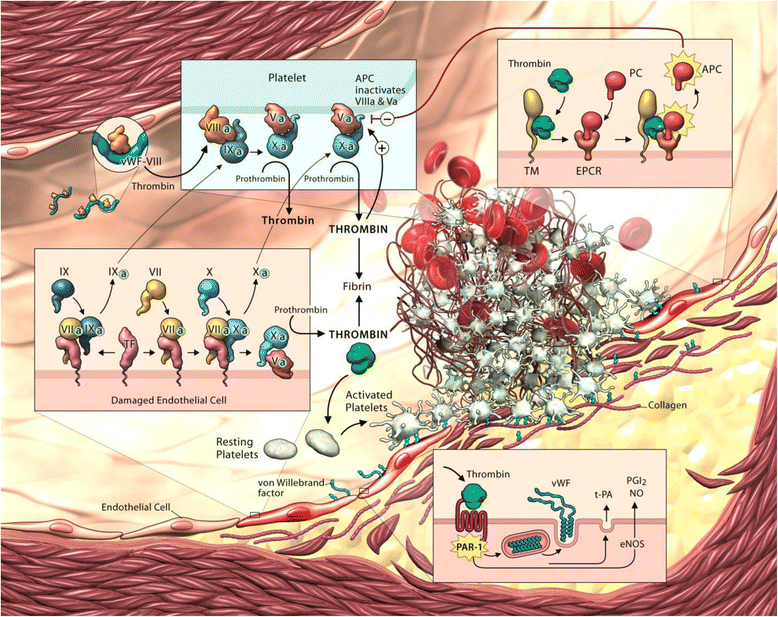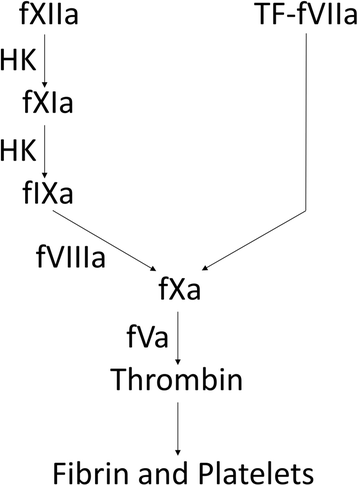Endothelial cell control of thrombosis
- PMID: 26481314
- PMCID: PMC4617895
- DOI: 10.1186/s12872-015-0124-z
Endothelial cell control of thrombosis
Abstract
Hemostasis encompasses a set of tightly regulated processes that govern blood clotting, platelet activation, and vascular repair. Upon vascular injury, the hemostatic system initiates a series of vascular events and activates extravascular receptors that act in concert to seal off the damage. Blood clotting is subsequently attenuated by a plethora of inhibitors that prevent excessive clot formation and eventual thrombosis. The endothelium which resides at the interface between the blood and surrounding tissues, serves an integral role in the hemostatic system. Depending on specific tissue needs and local stresses, endothelial cells are capable of evoking either antithrombotic or prothrombotic events. Healthy endothelial cells express antiplatelet and anticoagulant agents that prevent platelet aggregation and fibrin formation, respectively. In the face of endothelial dysfunction, endothelial cells trigger fibrin formation, as well as platelet adhesion and aggregation. Finally, endothelial cells release pro-fibrinolytic agents that initiate fibrinolysis to degrade the clot. Taken together, a functional endothelium is essential to maintain hemostasis and prevent thrombosis. Thus, a greater understanding into the role of the endothelium can provide new avenues for exploration and novel therapies for the management of thromboembolisms.
Figures
References
Publication types
MeSH terms
Grants and funding
LinkOut - more resources
Full Text Sources
Other Literature Sources
Medical



